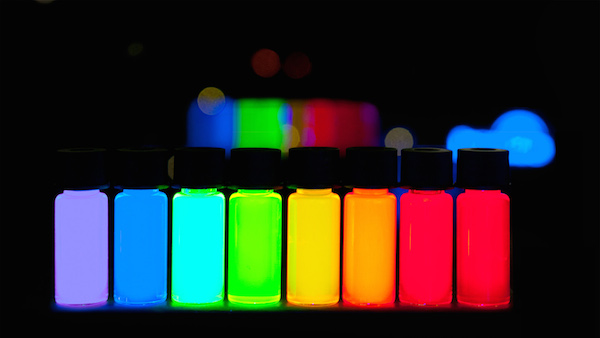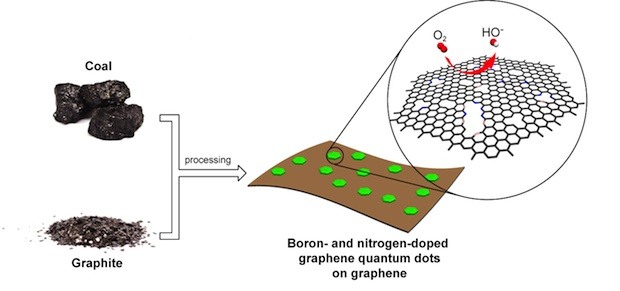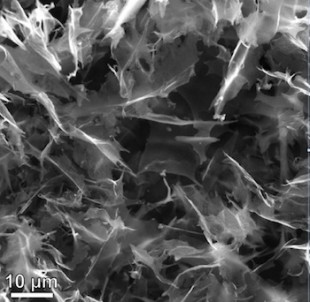
[Image above] Quantum dots, small semiconductor nanocrystals, are commonly used for fluorescent applications because of their unique properties. New research suggests that quantum dots could find application in fuel cells, too. Credit: PlasmaChem GmbH; Wikimedia CC BY-SA 3.0
James Tour is at it again.
We’ve already covered how his Rice University research team has designed glass that stays ice-free and a material that catches carbon dioxide at natural gas wellheads. But their latest peer-reviewed story delves into a topic that’s sure to turn a few more heads in the ceramic community—fuel cells.
While those are some pretty diverse topics of study, the Tour group’s research endeavors all explore diverse applications for carbon-based compounds.
The latest discovery, published in ACS Nano, details the development of graphene-based catalysts that could replace those of expensive platinum in fuel cells.
Last year, the team figured out how to synthesize high-yield graphene quantum dots (GQDs) from uber-inexpensive coal. In the new research, the team combined those dots with graphene sheets into self-assembling nano-platelets.

Graphene quantum dots, graphene oxide, nitrogen, and boron combine into a catalyst capable of replacing platinum in fuel cells at a fraction of the cost. Credit: Tour Group; Rice U.
“The hybrid material combined the advantages of each component: an abundance of edges where chemical reactions take place and excellent conductivity between GQDs provided by the graphene base,” says a Rice press release.
The team codoped the graphene hybrid with nitrogen and boron by high-temperature annealing to add some additional catalytic sites to the carbon material.
“The GQDs add to the system an enormous amount of edge, which permits the chemistry of oxygen reduction, one of the two needed reactions for operation in a fuel cell,” Tour says in the release. “The graphene provides the conductive matrix required. So it’s a superb hybridization.”

An electron micrograph shows flake-like nanoplatelets made of graphene quantum dots drawn from coal and graphene oxide sheets, modified with boron and nitrogen. Credit: Tour Group; Rice U.
When pitted against expensive commercial platinum-carbon catalysts, the off-brand outperformed its expensive platinum counterparts in oxygen reduction reaction by about 15 mV in positive onset potential. It also provided 70% larger current density than the platinum option.
“The efficiency is better than platinum in terms of oxygen reduction, permitting one to sidestep the most prohibitive hurdle in fuel-cell generation—the cost of the precious metal,” says Tour.
The paper is “Boron- and nitrogen-doped graphene quantum dots/graphene hybrid nanoplatelets as efficient electrocatalysts for oxygen reduction” (DOI: 10.1021/nn504637y).
Check out the short video below to learn more about the Tour lab’s synthesis of quantum dots from coal.
Credit: Rice University; YouTube
